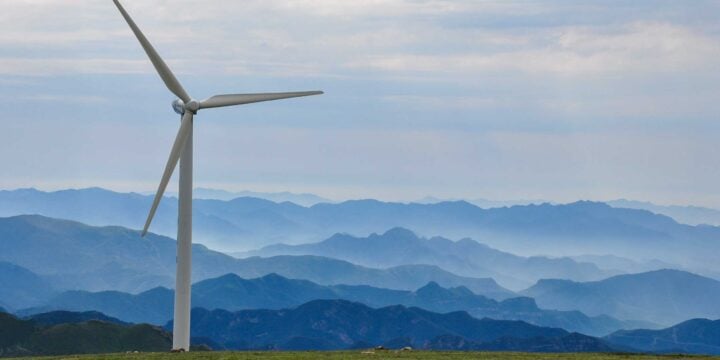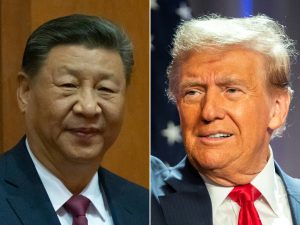An international team of researchers has examined wind energy’s environmental, social, economic, and legal aspects. In this interview, Russell McKenna, an expert in energy system analysis, explains where he sees the greatest need for action to develop wind energy further.
ETH News: What is the study about, and what is its core message?
Russell McKenna: The study looks at the impacts of wind energy on the systems in which it is embedded; whether environmental and climate systems, socio-economic, techno-economic, or political-legal systems. We looked at the current state of research and tried to distinguish where the picture is relatively clear and where challenges (still) need to be overcome. We defined a total of 14 impacts to show where research priorities should lie to overcome some of these challenges.
What specific impacts are there? Can you give us some examples?
In the area of environment and climate, for example, the effects of wind farms on the local climate or the end-of-life scenario of rotor blades that cannot be recycled are considered. In the socio-economic systems, we have identified, among other factors, the effects local costs and benefits related toof wind turbines on local costs and benefits. In the political-legal system, one example of a question is what happens if the supply chain is interrupted for geopolitical reasons.
How did you go about identifying these 14 impacts of wind energy?
Some background: We are 24 co-authors from different institutions, mostly involved in a three-year project funded by the European Commission called WIMBY, which stands for “Wind In My Backyard.” As part of this project, we wanted to conduct a holistic analysis of wind energy and create an inventory of its various impacts on different systems. We conducted a comprehensive literature review of over 400 studies and were thus able to identify the current state of the art and the priority research topics.
Which result surprised you the most?
There were some results that we found to be contrary to popular belief. One example is infrasound, low-frequency noise that is often mentioned as a problem by the public because it can cause irritation and even make objects in houses vibrate. However, research has produced only one study we know, examining a specific wind turbine. It was done about three decades ago when the first prototypes were just being built. No correlation with low-frequency noise can be demonstrated with today’s turbines – but this has not yet become common knowledge.
Speaking of wind turbines: almost 60,000 installations will need to be replaced by 2030, and their rotor blades cannot be recycled. What approaches are there to avoid this problem in the next generation?
The fibre binder poses a problem when recycling the rotor blades. Indeed, thermoset plastics such as epoxy or polyester cannot melt, making glass fibre recovery nearly impossible. As a result, most blades are currently crushed and landfilled or laid deposited in unofficial “interim storage” sites. Technologies such as pyrolysis (thermochemical treatment without oxygen) can help recover the blades’ fibres. Still, the resulting quality of the recovered material and the very low market price of the virgin counterpart make it an economically unattractive option. However, recently made blades have better prospects, as major manufacturers now use a resin that can be dissolved at the end of life, making it easier to free the fibres 20 years from now. A combination of approaches is thus being taken to recirculate as much material as possible. Finally, such burdens always need to be balanced against the co-benefits of wind energy expansion – one of them being the phasing out of fossil-based energy.
Where do you see the greatest need for action?
Clearly, the population’s acceptance of wind turbines is key, as they do influence the landscape. We have had a similar situation with the existing grid infrastructure for decades. People want electricity to come out of the socket and rely on it daily. The electric grid is suspended from pylons across the landscape, which are sometimes not locally accepted. In other words, people want the (energy) service, but the “problem” of the impact should be somewhere else. It is similar for wind turbines: there is generally high acceptance in the population, for example, 60% of the Swiss population support wind in the future electricity mix, but local opposition is common. Evidence shows that people might be more willing to accept wind turbines if the community benefits, for example, through a financial stake in the project or if jobs are created for the local economy. These jobs are not just technical ones – believe it or not, wind farms can also be attractive locations for tourism. In general, a lot still needs to be done to educate the population about the relative advantages and disadvantages of wind power. A compromise is always required with all energy technologies, and it is unreasonable to focus on the disadvantages of one technology without considering the alternatives.
Which topics of the study are particularly relevant for Switzerland?
Almost all the topics identified are relevant to Switzerland, although we can probably exclude offshore wind farms. For example, in the techno-economic category, we look at how wind energy integrates into the energy system with storage, flexibility, grid enhancement and sector coupling measures. Switzerland has the advantage that its system has historically been heavily geared towards renewable energies; hydropower accounts for almost two thirds of the electricity supply. You can build on that experience and expertise with large amounts of non-dispatchable electricity generation. We also need integrated energy systems, which Switzerland already has with some of its neighbouring countries. However, tighter market integration will depend on the pending agreements with the EU.
Another point to highlight is the supply chains’ resilience to geopolitical developments. As far as I know, there are no Swiss manufacturers of wind turbines, which is a risk because we have to import the technologies. So, whilst we achieve more energy independence through domestic renewable energy supply, we increase the dependency on technology imports.
What is your personal highlight or something positive that you would like to emphasise?
I am proud of Downloadthe table in the study (PDF, 107 KB). It distils more than 400 scientific studies and provides a comprehensive and concise overview. We have identified research priorities and highlighted possible solutions in a few key points. The table can also serve as a base for policymakers to address key challenges in accelerating wind developments. In addition, the table shows whether the impact depends strongly on the wind turbines’ location. If the dependency is high, thean impact of wind energy differs a lot depending on location; other impacts are spatially rather homogenous.
What are the next steps?
We can look ahead now that we have been working on this study for almost two years. Ongoing work in WIMBY will help to address a lot of the challenges. For example, we are developing a Europe-wide map of landscape quality in the form of so-called “scenicness”. Based on crowd-sourced data from Great Britain, we have developed a machine-learning model to connect this parameter to other spatial characteristics such as remoteness, level of human impact and land use categories. This means we can estimate such indicators for regions where data is lacking. The result is imperfect, but it helps measure the quality of landscapes at the European scale, allowing us to consider such factors in wind farm planning. One main output from WIMBY will be interactive maps, where users can explore all sorts of data for any location in Europe and analyse the feasibility and impact of potential wind turbine farms.
Any final comments?
I want to emphasise that I am not in any way advocating for wind energy than over any other technology. HoweverBut, I am a scientist conducting interdisciplinary research on energy technologies and systems. This research shows that these technologies all have advantages and disadvantages across a wide range of impact categories. Unfortunately, the discussion around the energy transition tends to focus on specific pros or cons and blend out the others. This and other studies have uncovered some of the “myths” around wind energy, by distinguishing them from real impacts and research challenges. It is crucial that all stakeholders, including the public, have the “full picture” in mind when trading off between diverse energy technologies.
Source: ETH Zurich








